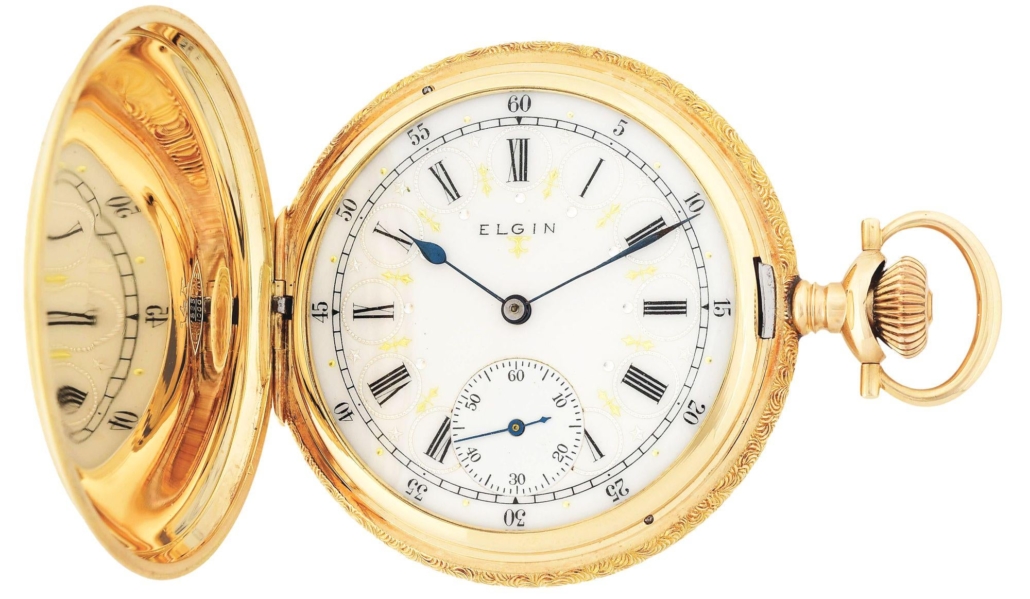
NEW YORK – The technology age has placed smartphones into the hands of nearly everyone, rendering the wristwatch or pocket watch unnecessary, except as a fashion statement. Many people continue to wear a wristwatch, perhaps out of habit or a sense of nostalgia in addition to its appeal as an accessory, but the pocket watch has nearly been tossed into the dustbin of history. It’s difficult to believe today, but in the late 19th and early 20th centuries millions of pocket watches were made and sold.
In the heyday of the pocket watch, two companies dominated the market: Elgin and Waltham. But Elgin, which was founded on the idea of mass-producing high-quality pocket watches using machine-made, interchangeable parts, were the undisputed people’s choice. During the firm’s 100-year-plus history (1864-1968), Elgin produced around 60 million watches, most of which were pocket watches. In that century span, Elgin produced half of the pocket watches sold in the U.S.
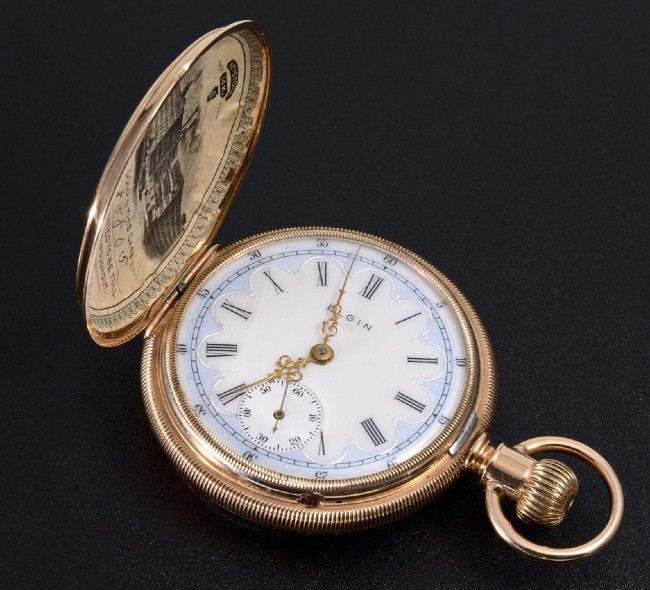
The company was first incorporated in 1864 as the National Watch Co. It was founded by five men in Chicago, but when deciding where to build a manufacturing plant, the men settled on Elgin, about 30 miles northwest of Chicago. Their watches were an instant success, and so many people (dealers, too) had begun calling them “watches from Elgin” that, in 1874, they changed their name to the Elgin National Watch Co. The name was kept up until the very end.
Elgin specialized in making railroad-grade watches. That resonated with a buying public well aware that railroad workers were slaves to time and heavily dependent on reliable, accurate watches to run the trains. And, thanks to mass production, Elgin realized there was a large market for good watches that could be sold and fixed inexpensively, using factory replacement parts that didn’t require hand adjusting. Until 1850, watches were pretty much made by hand.
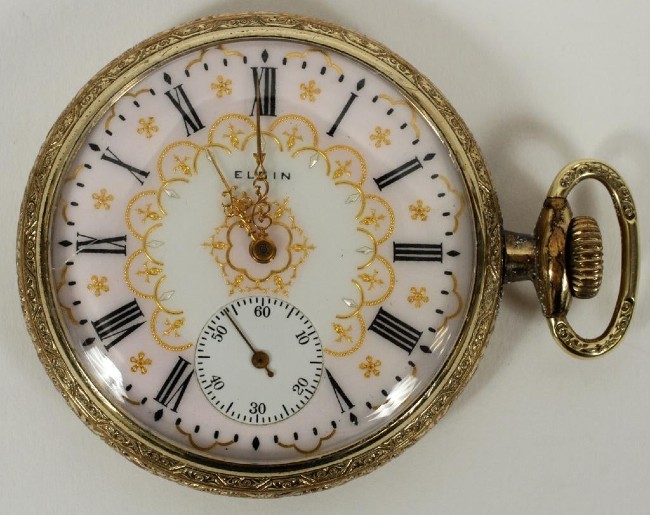
The very first Elgin watch came out of the plant in 1867 – an 18 size B.W. Raymond railroad grade pocket watch with full-plate design, named in honor of one of the five founders: Benjamin W. Raymond, who was the company’s first president, a former two-term mayor of Chicago and a director of the Galena & Chicago Union Railroad. Two years later, in 1869, the company won a silver medal award for “Best Watches, Illinois Manufacture” at the 17th annual Illinois State Fair.
It wasn’t until 1910 that Elgin produced its very first wristwatch, leading most other American watch companies by a good number of years. That same year it built the Elgin National Watch Co. Observatory to maintain scientifically precise times in their watches. Despite this tireless dedication to accuracy and excellence, Elgin never made the highest-quality watches in the world, nor did they make the cheapest. Like Waltham, they happily seized the mid-market.
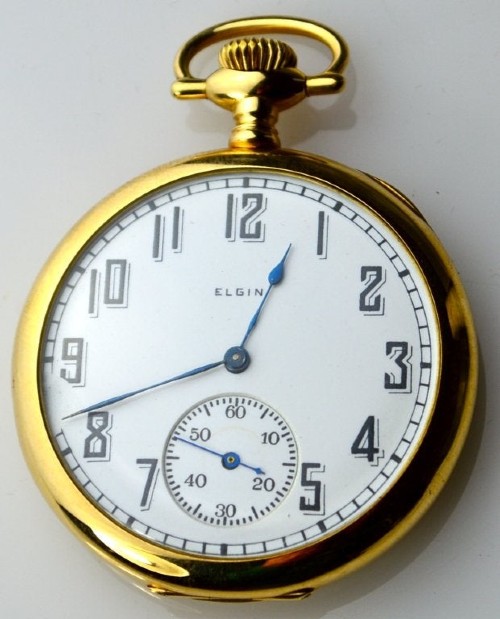
“Elgin was not in the watchmaking business for glamour or major expense that would limit their buyers’ market,” said James Campbell, library and maintenance supervisor of the National Association of Watch & Clock Collectors in Columbia, Pa. “Elgin produced affordable and dependable watches, mainly for the working man but they also made-high end watches as well. Their top-of-the-line products tend to get overshadowed by the number of watches produced.”
Campbell said the railroad-grade Elgins were expensive to buy at the time, especially the models/grades of Veritas, Father Time, B.W. Raymond and Lord Elgin, to name a few. “These models were produced with a higher grade of finish and could be considered glamorous but only to the person who opened the back of the watch,” he said. “Beauty is in the eye of the beholder, and often times the beauty of the watch was hidden unless the movement was placed in a view back case. Sometimes only the watchmaker was able to see the beauty of the watch.”

As to the current market demand for Elgin pocket watches, Campbell said the high-grade examples, including railroad grades, will always be in demand for their reliability and eye-catching movements to the collector. “The lower yet dependable grades have dropped in value for the time being but may have a comeback with the younger generations getting nostalgic,” he observed. “I still wear a low-grade Elgin 15 jewel open face from time to time because it is built like a tank and is very reliable.”
Campbell said he’s holding out hope that, with the world going “green,” mechanical movements will come back into fashion for their reliability and low maintenance, if cared for properly. It could happen. After all, watches are one of the few things made 50 or even 150 years ago that even today can be put to good practical use. This is especially true for Elgins. So many were made and so many spare parts were produced, they can still be easily bought and repaired. Mechanical watches might not be as accurate as a quartz watch, but quartz watches don’t tick.
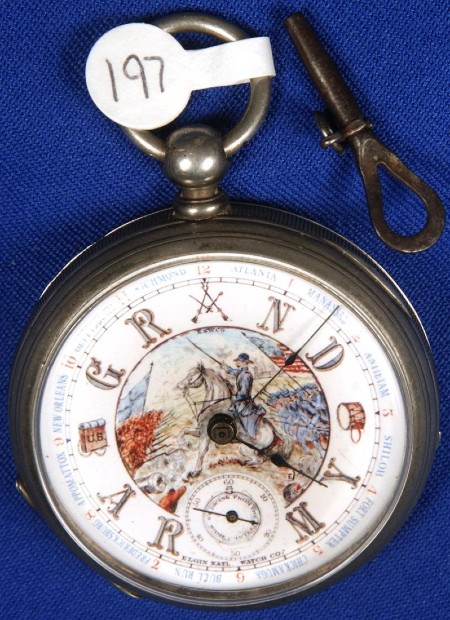
All things pass, and in 1964 Elgin shut down its aging, obsolete factory in Elgin and relocated most of its manufacturing to a new plant in Blaney, South Carolina (which, remarkably, changed its name to Elgin). But all U.S. manufacturing was discontinued in 1968, and the rights to the name “Elgin” were sold and resold multiple times. Watches that say “Elgin” are still made today, but Elgin-branded watches produced after 1968 have no connection to Elgin Watch Co.
# # #


